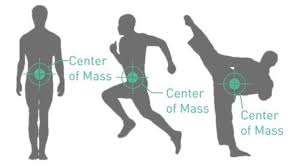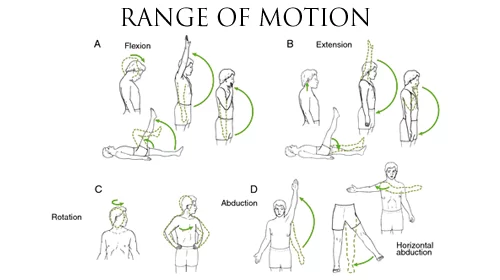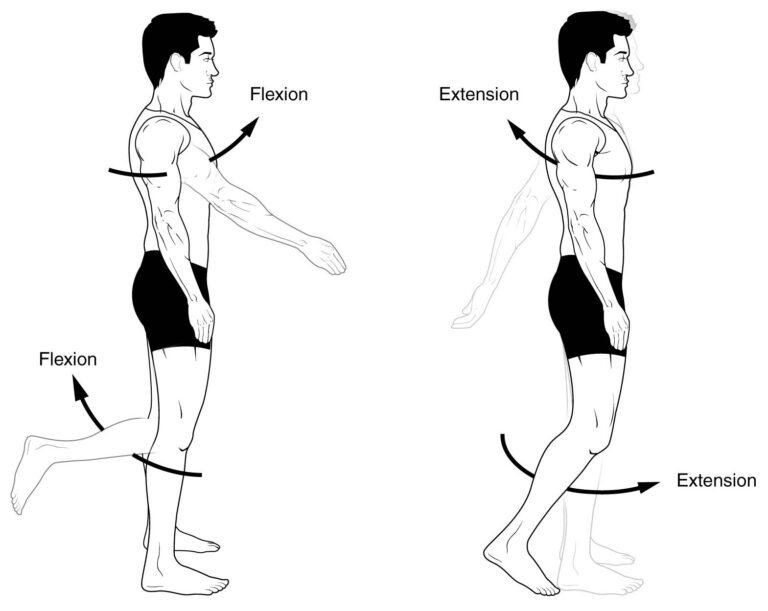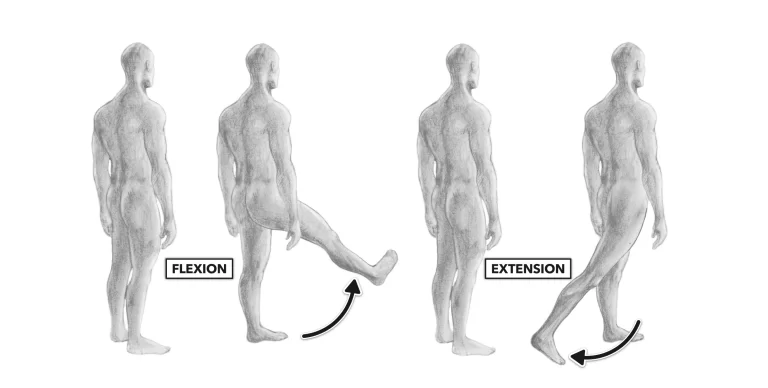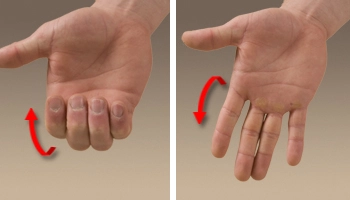GRAVITY IN BIO-MECHANICS
Table of Contents
What is a Gravity?
DEFINATION:
Gravity is a force that tries to pull two objects toward each other. Anything which has mass also has a gravitational pull. The more massive an object is, the stronger its gravitational pull is. Earth’s gravity is what keeps you on the ground and what causes objects to fall. Centre of gravity in the human body.
INTRODUCTION:
The center of gravity (COG) of the human body is a hypothetical point around which the force of gravity appears to act. It is a point at which the combined mass of the body appears to be concentrated. Because it is a hypothetical point, the COG need not lie within the physical bounds of an object or person.
What is your center of gravity?
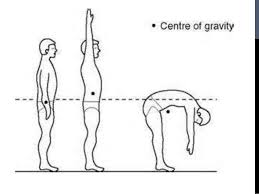
COG IN THE HUMAN BODY IN ANATOMICAL POSITION

In the anatomical position, the COG(center of gravity) lies approximately anterior to the second sacral vertebra. But, since human beings do not remain fixed in the anatomical position, the precise location of the COG changes constantly with every new position of the body and limbs.
*Whereas the center of mass is the mean position of matter in a body or system. Gravity, like all forces, has a point of application, a magnitude, and a direction.
The point of application is the center of gravity or center of mass (COG or COM). This changes relative to how many segments are involved. For instance, the COG of the forearm alone will be different than the COG of the arm, forearm, and hand. The magnitude is dependent on the orientation of the segment in space and is proportional to the mass of the involved segment. The direction of gravity is commonly referred the line of gravity (LOG). This direction is always vertically downward towards the center of the earth, regardless of the orientation of the segment/object to space.
Center of Gravity within the Body Segments
The COG in the anatomical position is just anterior to the second sacral vertebrae. However, it’s important to note that COG/COM is conceptual. It is not a piece of anatomy; it is constantly changing with motion. With every movement and change of position, the COG changes the way joints react and muscles perform. For example, the picture below shows how the COG changes when the hip joint is flexed to 90°. This brings the COG anteriorly and creates a clockwise torque at the hip joint. To counteract this moment of torque created by the COG, the contralateral hip extensors must fire to keep the body statically erect.

*Center of Gravity Outside the Body
Another consideration is that COG does not have to be a part of the body. Many exercises and movements cause the body’s COG to become displaced outside of the body. This would create an increase in the lever arm of the resistance force. Proper lifting mechanics are simply a means of decreasing this lever arm as much as possible. As seen in the figure below, bending forward at the hip causes the COG to actually fall outside of the human body.

Applying basic biomechanics to gravity will give a better understanding of how postures, movements, and exercises affect the body. A simple change in the position of one extremity can cause a significant change in joint forces, muscle activation patterns, and neuromuscular coordination demands. Keep this in mind when assessing movements and implementing interventions.
1) Gravity is the force that attracts a body toward the earth
2) Center of Gravity/Center of Mass is the point of application of the gravitational force
3) The direction of gravity is the Line of Gravity (LOG) and is always perpendicular to the ground
4) COG in the anatomical position is just anterior to the second sacral vertebrae
5) COG is not a piece of anatomy, it is conceptual and changes with different positions and motion
6) COG is relevant to the body segments that are included in the system
7) COG may be located outside of the body
8) The LOG position relevant to the BOS is the basis for stability
LINE OF GRAVITY
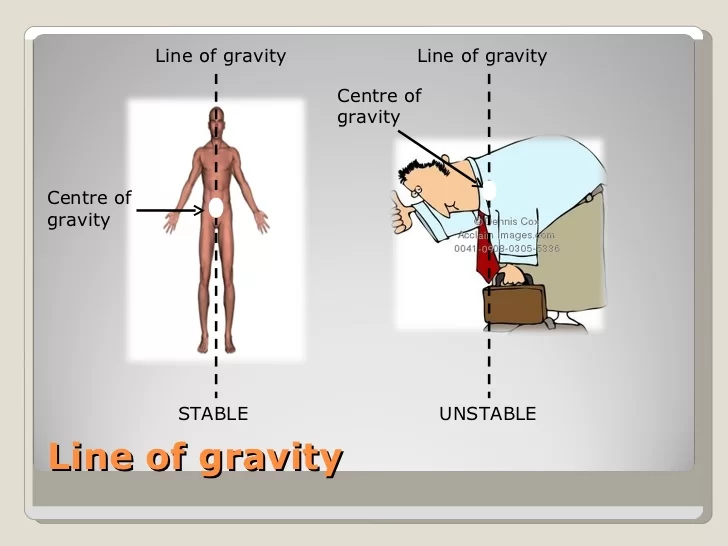
The line of gravity is an imaginary vertical line from the centre of gravity to the ground or surface the object or person is on. It is the direction that gravity is acting upon the person or object. In the image above you can see the line of gravity in red going down to the ground from the centre of gravity, indicating the force of gravity upon the sprinter.
The location of this line in relation to the base of support has a huge influence on balance and stability. In the anatomical position (right) the line of gravity is between the legs and feet right under the person

The closer the line of gravity is to the centre of the base of support (your next dash point) the better balanced a person is in this position. If the line of gravity fall outside of the base of support the person must provide corrective muscle action, usually movement otherwise they will fall. This is why the sprinter’s line of gravity is in front of his base of support (back foot on the ground) because it must be there in order for him to be stable and move forwards. If the line is in his base of support and he starts running, he will fall backward, unless he moves the line to in front of him.

Since a lower centre of gravity means better balance and stability, a shorter line of gravity between the centre of gravity and the ground also means better balance and stability. So rugby player dodging through the defense will shift her line of gravity outside of her base of support in various directions as she changes direction and will also lower her centre of gravity.
The LOG falls outside the base of support and will be to the side and in front of the player in order to allow her to continue to accelerate forward and to her left (our right).

